How to do trading online in 5 steps – Guide 2022
Online trading refers to buying and selling of financial products using electronic systems. This trading can be done from any location in the world. It is very convenient and can be done at any time of the day with a internet connection and a online brokerage company.
Contents
How to trade online in 5 steps
1. Open a trading account
The first step to trading online is to find a good broker and open an online trading account. Even if you have a personal brokerage account, it might be a good idea to have another separate trading account. Take advantage of the demo mode offered by brokers to familiarize yourself with the interface of the account and the trading tools offered to clients. Most serious brokers offer free virtual money trading accounts. Some sites, like ours, specialize in reviews of online brokers, which can help you find the right broker more easily.
How to open a Trading Account ?
1. First, you have to open your account by clicking the “Sign Up” button.
2. After registration, you will receive an e-mail with your registration data. 1. By filling out and submitting the registration form you will receive an e-mail with your details.
3. After registration, you will receive an e-mail with your registration data.
4. You have to confirm your account by clicking on the link received in the e-mail.
5. After that, your account will be confirmed.
In order to verify your trading account , you must provide the following information for the required KYC verification: Your full name, Your address, Your phone number and Your passport and other document confirming your identity.
2. Read to learn trading
You will find a lot of free information on the internet: Financial articles, books on the stock market, website tutorials on online trading. Most of this information is free or inexpensive to learn and can help you a lot as a beginner.
It is important to study all the workings of the market and not to agree solely on the learning of the technical analysis. Instead, it’s best to study anything that affects the market more broadly, including some ideas and concepts that don’t particularly interest you right now.
Here are five very interesting books for new traders :
- Trading for a Living by Dr. Alexander Elder
- Technical Analysis of the Financial Markets by John Murphy
- Winning on Wall Street by Martin Zweig
- Stock Market Wizards by Jack D. Schwager
- The Nature of Risk by Justin Mamis
Try to follow the market when you have free time. Take a look at prices in foreign markets. (Markets are global now, thanks in part to the growing popularity of online trading and investing, as well as the development of derivative instruments that link stock, forex and bond markets around the world.)
Also check financial news sites such as Google Finance, Yahoo Finance and CBS MoneyWatch. These news sites are excellent sources of market information for new investors. Some traders and investors also recommend following other financial news sites such as The Wall Street Journal and Bloomberg.
3. Learn technical analysis
Technical analysis involves using charts, and price patterns, to predict future price action.
To learn technical analysis, you need to learn a few basic chart patterns. The chart patterns form the foundation of technical analysis. You can learn technical analysis, using online resources, books, and courses.
Day traders usually trade or spend most of their time watching charts and looking for price patterns. Some day traders, known as scalpers, will trade in and out of a position within minutes or seconds. These traders usually close out all trades before the market closes for the day. Swing traders hold trades from a few days to a few weeks. Swing traders often set price targets and attempt to exit a trade when it reaches a certain price. Position traders may hold a trade for several months or even years.
The time horizon becomes an important point at this point. Asset prices offer trends on short, medium and long term intervals.
This means that a stock can have a long-term uptrend, a mid-term downtrend, and a short-term bullish trading range, all at the same time. keep in mind that most trading opportunities will occur through interactions between different timeframes.
Traders may use technical indicators such as moving averages to help time their entry and exit points. No matter how long you plan to hold a trade, you must always cut your losses short and let your profits run.
4. Practice Trading
Whether to trade forex, the stock market or any other market, paper trading, or demo trading, is a perfect solution to learn and practice trading without risk of loss. It allows the neophyte to follow market actions, buy and sell assets that will form your theoretical performance history. without risk of losing your capital
This involves a demo trading account or otherwise called a market simulator that simulates and replicates the performance of a real stock exchange. Thanks to these practice accounts, you have the possibility of carrying out numerous transactions, testing trading strategies over different periods and analyzing your results.
Most of the best brokers offer a free demo account, and many brokers offer the possibility to customers to practice trading in demo mode for an unlimited period. This will allow you to familiarize yourself with the trading platform so that you don’t get the wrong buttons when investing with your own funds.
After you have practiced enough and you feel ready to get started in real money trading, you can then start trading for real money.
Simulated trading is a good place to start, however, it has some flaws that may impact you when you trade for real, even if your results in demo mode are very good.
Traders are very often impacted by the twin emotions of greed and fear. Trading in demo mode does not engage these emotions because they are not associated with actual profits or losses.
In fact, it is most often this psychological aspect that impacts traders and pushes them to take bad decisions. It is important for new traders to know this aspect and to solve their problems related to money and self-esteem
5. Other ways to learn and practice trading
Although you can learn trading on your own, remember to keep training and learning more about your career path as a trader. Don’t hesitate to get lessons online or in person. trading courses can give you a lot of knowledge and are beneficial, some trading courses are more suitable for the novice (with basic advice on analyzing charts) while others are designed for professional traders and allow them to learn more advanced techniques.
Seminars are also a great way to learn online trading, and can often provide valuable insight into the overall market and specific trading strategies. Seminars generally offer information on a specific type of asset, or a particular trading technique.
Some of these trading courses may be completely theoretical, while others have a more practical focus, offering workshops where you actively take a position and try out different trading strategies (often with a demo account).
Paying for research and analysis can be both educational and useful. Some investors prefer to monitor market professionals. There are many paid subscription sites available on the internet: For those interested here are two highly respected services: Investors.com and Morningstar.
in some cases, it can also be useful to find you a mentor, a practical coach as well as the opinion of another more experienced trader to guide you, give you feedback on your trading technique and give you constructive advice and criticism. . If you don’t know one, you can always pay for one. There are many trading schools that offer the opportunity to get mentorship as part of their training programs.
Manage your risks
Consider risk carefully. Risking 1% of your total trading capital on each trade is reasonable. Some traders risk 1% or less, while others risk 5% or more. Know when to be aggressive and when to be conservative. In general, you want to be more conservative early in your trading career, taking smaller position sizes. Set a stop loss order for every trade. The stop loss is a predetermined price at which you’ll liquidate a trade if it goes against you. Be patient, but act quickly. No one likes losing trades, but there’s nothing you can do to make them profitable, other than take your losses.
The main advantages and disadvantages of online trading
Online trading is an exciting and easy to understand activity. It can be a quick and easy way to earn money. Although it can be very lucrative to trade online, this activity still requires some discipline and carries a high risk of losing your invested capital. Here is a list of the main advantages and disadvantages of online trading.
Advantages:
- Yous can earn a lot of money
- You can do it from home with a computer and an internet connection
- No physical effort, all is analysis, strategies, and skills
Disadvantages:
- You need solid knowledge and strategies because if not, you probably lose money
- You are possibly competing against professional traders, banks and hedge funds who have more experience and more capital to trade
- You can lose all or part of your capital
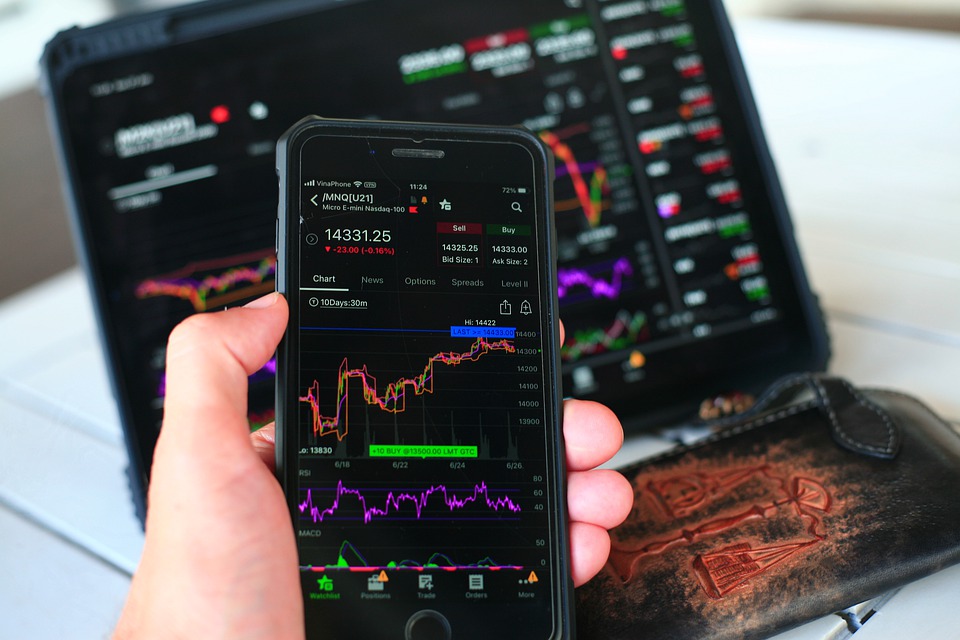
What markets are available for online trading ?
There is a multitude of markets allowing investors and traders from all over the world to speculate and grow their capital. Some traders specialize in the stock or forex market while others prefer the cryptocurrency market for its high volatility and the ability to generate great profits over a short period of time. Each market is different and has these specificities. Here is a list of the main markets available for online trading as well as a description of them.
Stocks (securities)
The stock market, also known as the stock exchange or simply as ’the market’, is where investors buy and sell stocks and other securities. When investors buy stocks, they are buying small pieces of ownership in a company. The stock market is one of the largest and most well-known financial market in the world, with the NYSE and NASDAQ being the world’s largest by market capitalization. The stock market is run on a stock exchange, which is a market where stock brokers and traders can buy and sell securities, and decide on the price of stocks. A stock exchange is where a trader or investor can buy and sell securities. A stock exchange is run and operated by a stock exchange company. A stock exchange company can be a private company or a public company. A stock exchange company is responsible for ensuring that the stock market runs properly. The stock trader, also known as an investor, is a person, or group of people, who buys and sells stocks and other securities on the stock exchange. A stock trader can be an individual or a financial institution. Examples of financial institutions include banks, insurance companies, pension funds, and hedge funds. Stockbrokers and traders can buy and sell stocks and other securities on the stock market. Stockbrokers and traders purchase stocks through stock exchange companies. Examples of stock exchange companies include the American Stock Exchange, the New York Stock Exchange, and the NASDAQ.
People buy and sell stocks for two major reasons. First, people buy stocks in hopes of making a profit. Second, people buy stocks for income. Investors who buy stocks in hopes of making a profit are also referred to as investors. Investors usually buy stocks in companies that are growing and doing well. Investors hope that the value of a company’s stock will rise, which will allow them to make a profit on their investment. Investors who buy stocks for income are also referred to as speculators. Speculators buy stocks in companies that are growing, but do not plan on holding onto their stocks for a long time. Speculators buy and sell stocks often, usually within the same day. Stock market investors purchase stocks from stock exchange companies, such as the American Stock Exchange, the New York Stock Exchange, and the NASDAQ. When investors purchase stocks, they are making an agreement to purchase a share of ownership in a company.
Forex (currencies pairs)
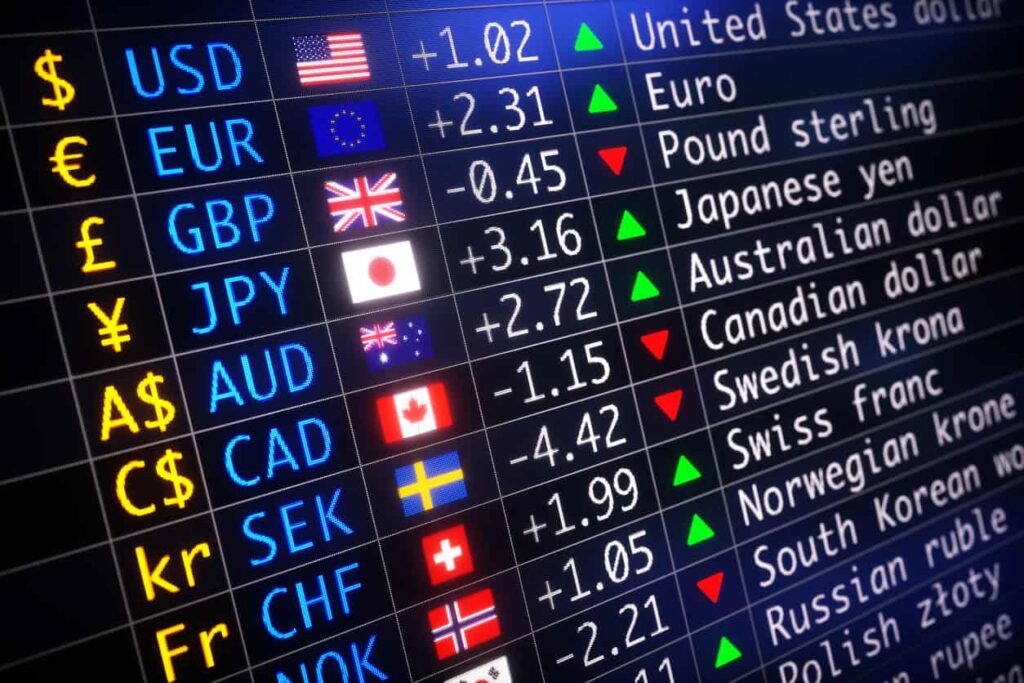
Forex is a decentralized market that operates through financial centers around the world. These centers allow you to trade currencies. The forex market is the largest, most liquid market in the world with an average daily trading volume exceeding $5 trillion. Because of the large trading volume, the forex market offers traders high liquidity. Forex is a truly global market. It operates on a 24-hour basis, five days a week. Forex can be traded from Sunday 21:00 GMT to Friday 21:00 GMT. A pip is the smallest price unit, the fourth decimal place, in a currency exchange rate. In forex trading, a pip is measured as the minimum price change that a given exchange rate can make. When trading currencies online, the value of a pip is always the same, regardless of the size of the trade. Spread is the difference between the buy price and the selling price and it serves as a commision for the broker.
Forex trading allows traders to make profits from price fluctuations of the currencies. The currency floating exchange rates are based on supply and demand. Currencies are traded in pairs, one currency against another. For example, the EUR/USD currency pair is traded. The EUR is the base currency, and the USD is the counter currency. Forex traders speculate on the price movements of currencies. They buy currencies they think are going to appreciate in value and sell currencies they think are going to depreciate in value. For example, if you think the EUR is going to appreciate against the USD and you buy EUR/USD, then you will make a profit if the EUR appreciates against the USD. The EUR/USD currency pair is quoted in two prices: the bid price and the ask price. The bid price is the price at which you can sell the EUR/USD currency pair, and the ask price is the price at which you can buy the EUR/USD currency pair. When trading in Forex, you don’t actually buy or sell currencies. Instead, you buy or sell contracts that represent claims to a certain currency. These contracts are known as “lots”. Each Forex lot is equal to 100,000 units of the base currency. For example, if you trade 1 lot EUR/USD, you are trading 100,000 EUR.
ETF: Exchange traded Fund
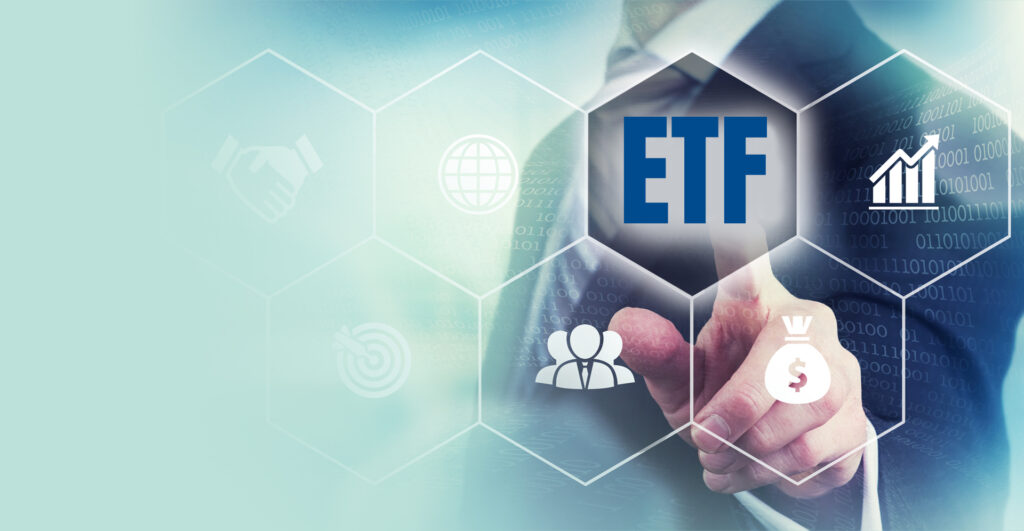
An exchange-traded fund, or ETF, is an investment vehicle that tracks a stock index, a commodity, bonds or another asset. ETFs are traded on exchanges just like stocks, but a mutual fund is a basket of securities that trade only at the end of each trading day, and the investor receives units based on the current net asset value.
Some ETFs track broad market indexes, such as the S&P 500 or Dow Jones Industrial Average. Others track specific sectors, such as energy, real estate, or health care. Still, others track commodities, such as gold or oil.
ETFs, on the other hand, can be traded throughout the trading day, and when you sell an ETF, you receive the share price of the ETF at that time. ETFs were introduced in the United States in 1993 and have grown in popularity ever since. As of August 2013, there were 1,518 ETFs traded globally, with approximately $2.1 trillion in assets, according to ETFGI, an index provider.
Government bonds
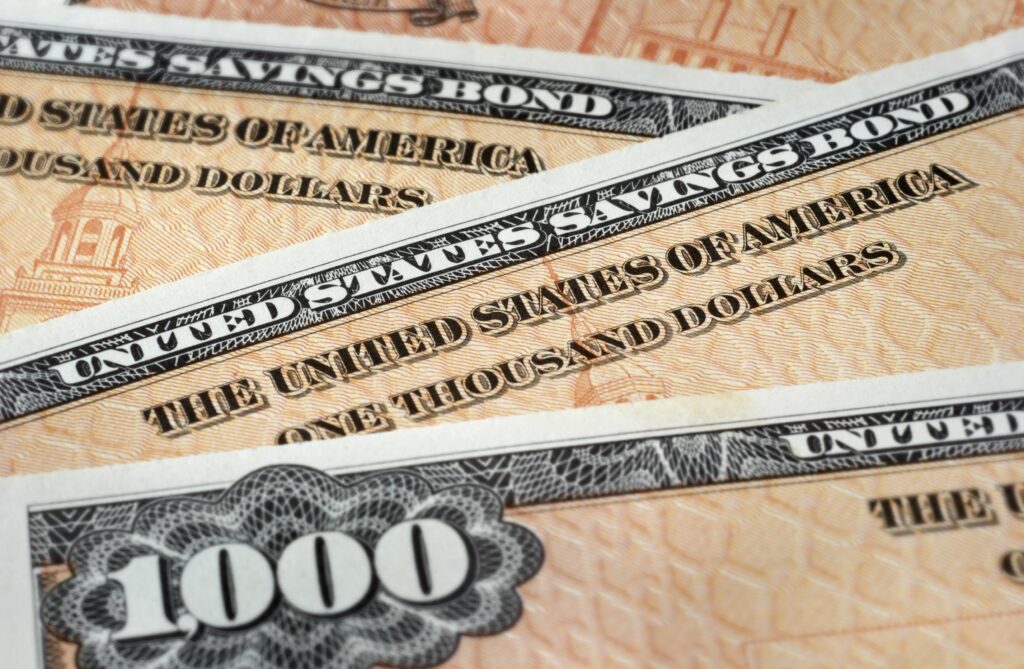
Government bonds are debt obligations issued by the government to raise funds. A bond is a loan to the bank. Government bonds are issued with a fixed rate of interest for a number of years. Individuals can invest in these bonds to send money to governments to earn a regular income from the interests.
Commodities

In commodities trading, we trade various commodities like gold, silver, crude oil, copper, corn, soybean, sugar, coffee etc in huge quantities. Commodities trading is done for speculation. In speculation, we trade commodities with the expectation of future price movements. How commodities are traded in commodity exchange? Commodities are traded in commodity exchanges like MCX, and NCDEX in lot sizes. In lot size, you can trade 100 kg of gold or 10 kg of copper. In commodity exchange, you can buy or sell commodities in lots.
Cryptocurrencies
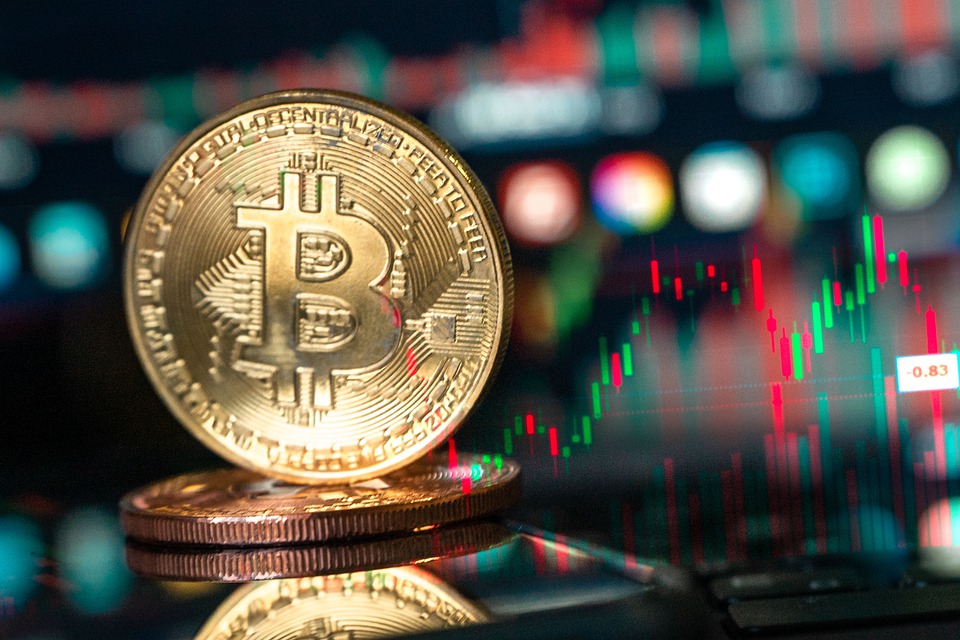
Cryptocurrencies (also called tokens) are digital assets that work as mediums of exchange using cryptography to secure the transactions and to control the creation of new units. Cryptocurrencies use decentralized control as opposed to centralized electronic money and central banking systems. The decentralized control is related to the use of blockchain transaction database in the role of a distributed ledger.
Bitcoin became the first decentralized cryptocurrency in 2009. Since then, numerous cryptocurrencies have been created. These are frequently called altcoins, as a blend of bitcoin and other digital assets alternative. Cryptocurrencies are classified as a subset of digital currencies and are also classified as a subset of alternative currencies and virtual currencies.
Cryptocurrency trading is an activity that consists in buying cryptocurrencies, like Bitcoin, Ethereum, and Monero, with fiat currency like dollars, euros, yen, etc., and reselling them when the price goes up to make a profit. In order to trade cryptocurrencies, you need a cryptocurrency wallet, a trading platform and, obviously, some funds. Cryptocurrency wallets are applications that allow users or investors to send and receive cryptocurrencies. A cryptocurrency trading platform is a software used by traders to trade cryptocurrencies online. Some trading platforms allow traders to trade cryptocurrencies with fiat currencies, like dollars or euros, while others only allow cryptocurrency deposites.
What are derivatives in online trading
Derivatives are financial instruments which derive their value from underlying assets. Derivatives are used to mitigate risks, increase potential gains, enhance trading opportunities and reduces trading fees.
The derivatives market has today become one of the largest markets in the world. The wide spread use of these instruments in hedging and speculation has made them one of the most sought after instruments in the market. Derivatives derive their value from underlying assets, which are typically stocks, bonds, commodities and currencies.
Derivatives have two main functions:
Hedging and Speculation. Hedging: Hedging involves trying to reduce the risks inherent in any investment. Companies often use derivatives to reduce their risks. For example, a company that exports goods, can use a derivative to hedge against a drop in the dollar’s value. By buying futures on the dollar, the company can lock in today’s exchange rate.
Speculation involves trying to profit from fluctuations in price. Speculators use derivatives to try to profit from price changes without having to take possession of the asset. Speculators typically have no intention of taking possession of the underlying asset.
What are the derivatives used to trade online
To trade To trade online, it is common to use financial derivatives because they have several advantages compared to raw assets, some of these advantages include lower fees, leverage and asymmetric risk taking as for example with the trading of option, whose gains are potentially higher than the amount invested.
Here is a summary of the most commonly used financial derivatives in online trading:
CFDs
CFDs are financial derivatives that allow traders to speculate on the price of an instrument by trading on the price difference between the underlying asset and a chosen CFD instrument. The underlying asset can be forex, stocks, indices, commodities or cryptocurrencies. CFDs are derivatives, which means the instrument’s value is derived from the value of an asset. Investors can use CFDs to hedge risk, take a position on an asset or to speculate.
CFD can be levaged. A leveraged product allows you to borrow capital from a broker to trade on a certain asset to amplifie your gains. The profit you make is calculated as the difference between the price you bought the asset for and the price you sold it at. For example, if you bought a stock at $100 and then sold it for $110, you would make $10 profit ($110-$100 = $10). Conversely, if you had bought the same stock for $110 and then sold it for $100, you would lose $10 ($110-$100 = $10 loss). Leveraged products come with greater potential gains because your capital is bigger but also come with more risk. If the asset’s price drops, the losses are amplified too.
Futures
A futures contract is a type of derivative contract, wherein two parties exchange financial instruments or physical goods, at a specified future date, at a predetermined price. Futures contracts are standardized to facilitate trading on a futures exchange. Trading is undertaken by both speculators and hedgers. Futures contracts are traded in the Futures Markets. The Chicago Mercantile Exchange (CME), founded in 1898, is the world’s largest futures exchange in terms of market capitalization. In September 2011, the CME merged with the Chicago Board of Trade (CBOT). Other prominent futures exchanges include: New York Mercantile Exchange (NYMEX), Intercontinental Exchange (ICE), London International Financial Futures and Options Exchange (LIFFE), Eurex, Tokyo Financial Exchange (TFX), Hong Kong Exchanges and Clearing (HKEx) and Shanghai Futures Exchange (SHFE).
Options
Options are a type of derivative in which one party pays a premium for the right to buy or sell a particular asset at a particular price within a certain time fram. Options trading is a type of trading in which the investor doesn’t actually buy or sell the underlying asset. Instead, the investor buys a right to buy or sell the asset at a future date. Options trading in stock market involves buying and selling of call and put options. In options trading, the investor buys a call option if he believes that the price will rise in the future. Similarly, the investor buys a put option if he believes that the price will fall in the future.
Binary options
A binary option is a financial option contract in which the payoff is either some fixed monetary amount or nothing at all. Binary options trading enables you to trade any asset, including stocks, foreign exchange, commodities, indices, and cryptocurrencies. Binary options are short-term financial instruments that traders can use to profit from price changes across several global markets. Binary options are contracts that pay a fixed amount when they expire in the money, and zero otherwise. The fixed amount is determined by the trader before the contract is opened.
how to trade in stock market
how to trade forex
how to trade in commodities
how to trade in cryptocurrency
how to trade in options
how to trade futures
